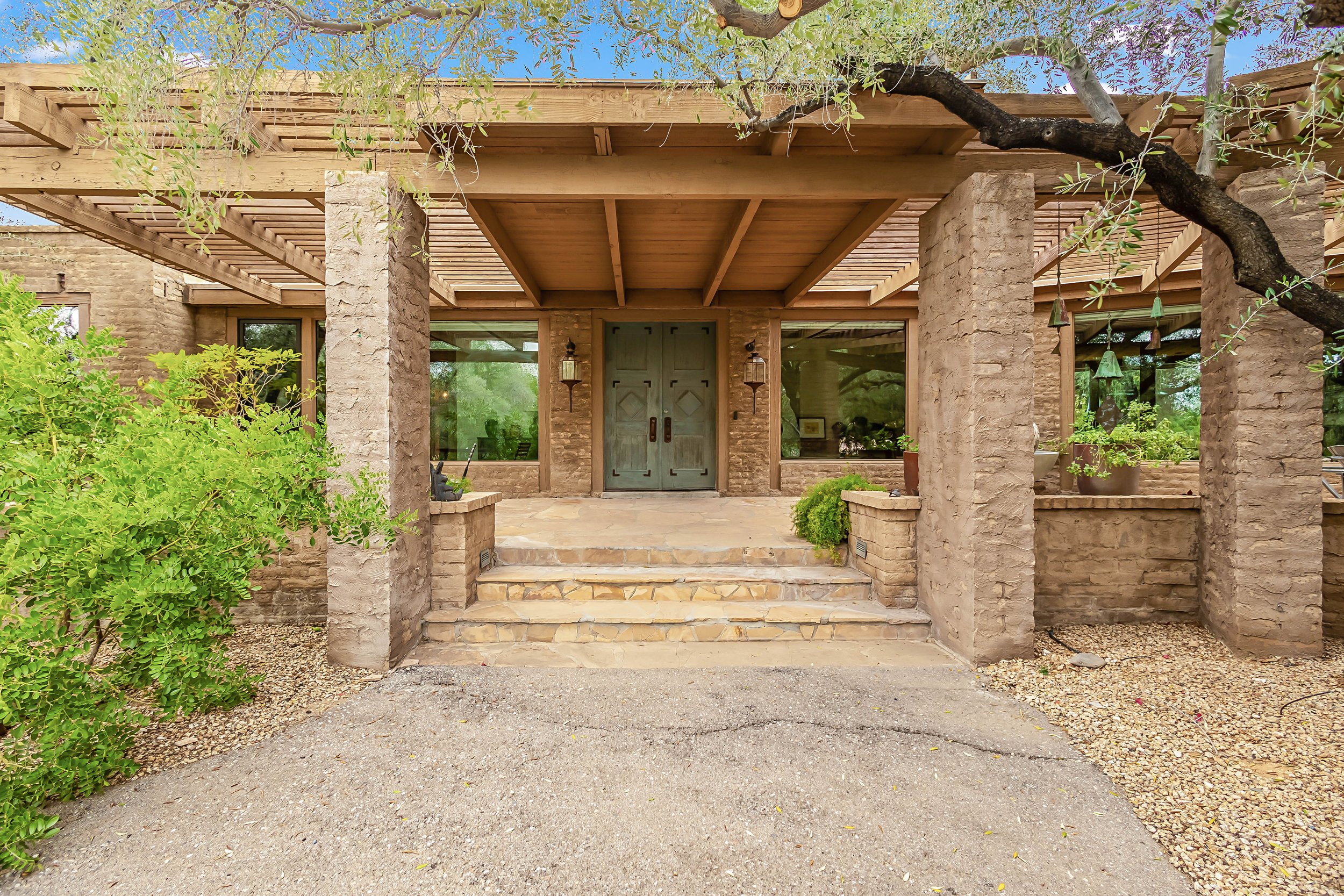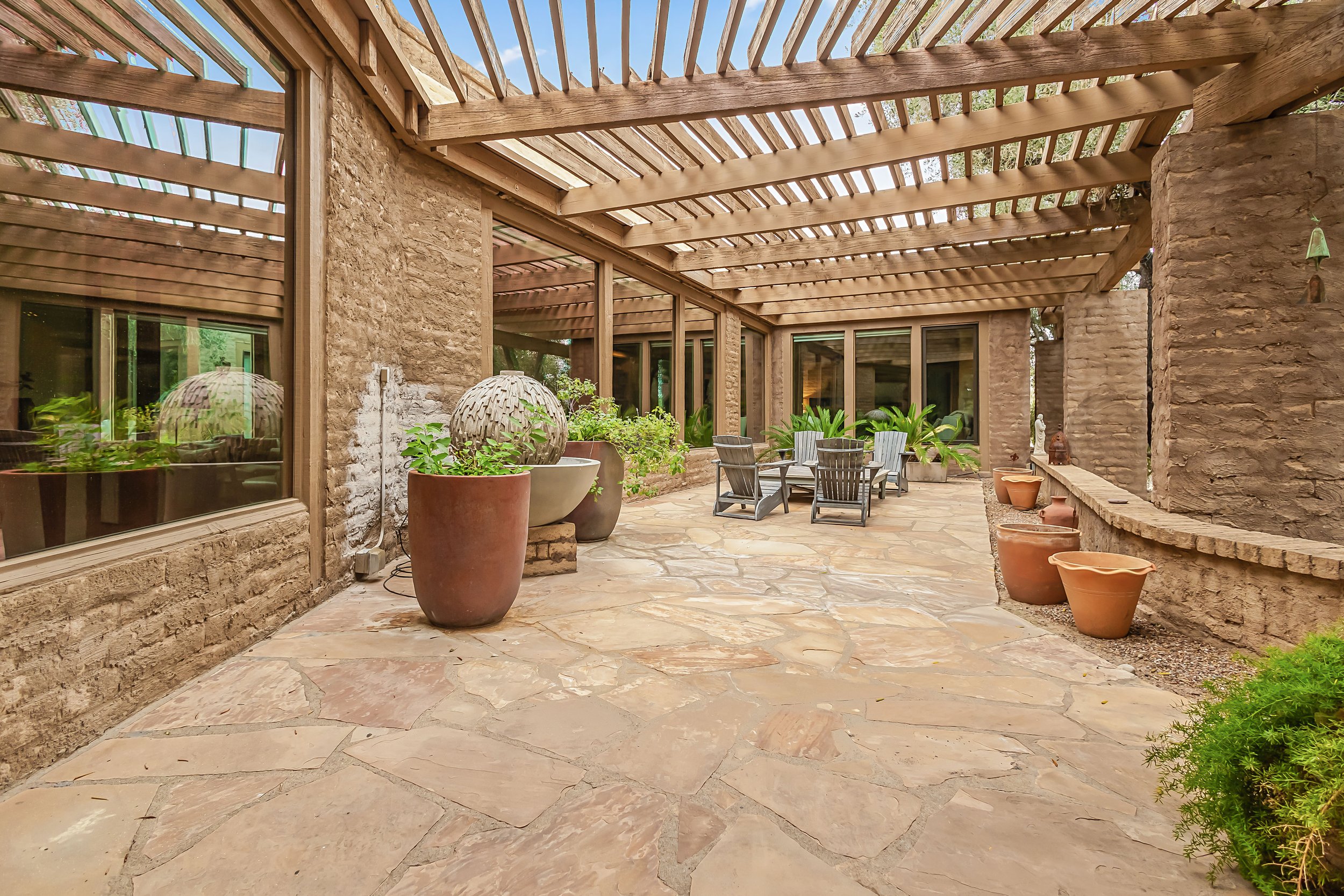
WHERE ART MEETS ARCHITECTURE
ADOBE TRADITION
GROWN FROM THE EARTH
Bill Tull
Bill Tull was a visionary artist and designer known for his sculptural adobe homes that seamlessly blended art and architecture. His designs incorporated Southwestern, Pueblo, and Moorish influences, creating unique homes characterized by thick adobe walls, carved corbels, stained glass, and natural materials. Tull was instrumental in reviving adobe construction in Arizona, working to change building codes and introducing innovative materials for stability. His homes, often described as "sculptures for the desert," are admired for their connection to the landscape, blending organically with the environment.
Sarah Davis
Sarah Davis, a Phoenician native, knows this beautiful state of Arizona well and takes great pride in representing real estate throughout the valley. Her roots go deep within Paradise Valley with her grandfather, the late Bill Tull, leaving a lasting legacy as an artist and designer. Her commitment to transparency, attentive listening, and understanding client needs forms the foundation of her approach to real estate.
The many strong skill sets Sarah carries she attributes to her athletic college experience, where she achieved great success on the Sacramento State Women’s Volleyball team. Sarah is committed to leveraging her expertise to not only serve her clients but also to pioneer new opportunities that enrich Arizona’s real estate landscape.
Sarah’s unwavering commitment to her clients has helped them feel empowered and supported thought-out their real estate journey.
sarah@realtorofthevalley.com
480-272-0475
What Are Adobe Homes?
An adobe home is a type of dwelling made from natural materials, primarily adobe bricks, which consist of a mixture of clay, sand, water, and organic materials like straw. These bricks are sun-dried and stacked to create thick, sturdy walls that offer excellent insulation. Adobe homes are commonly found in hot, arid regions such as the southwestern United States and Latin America, as their construction helps regulate indoor temperatures.
History of Adobe Homes
Adobe homes have been built for thousands of years, with origins tracing back to ancient civilizations in regions like Mesopotamia, North Africa, and the Americas. Indigenous cultures in the southwestern United States and Latin America embraced adobe construction for its ability to keep homes cool in hot climates. Over time, adobe homes have evolved but still maintain their traditional, eco-friendly methods and timeless appeal.

Construction Techniques
Adobe home construction techniques involve using natural materials, primarily adobe bricks made from a mixture of clay, sand, water, and organic materials like straw. Here are the key steps and methods:
-Brick Making: The adobe mixture is poured into wooden molds and left to sun-dry, hardening into solid bricks that are durable and provide excellent insulation.
Plastering: After the walls are built, they are often coated with a layer of mud or lime plaster to protect the adobe from erosion caused by rain or other elements. This also helps improve the aesthetic finish and durability.
Wall Construction: Once dried, the adobe bricks are stacked in a staggered, interlocking pattern with a natural mortar made from the same adobe mixture. Thick walls, often several feet deep, are constructed for strength and insulation.
Roofing: Traditional adobe homes use wooden beams, known as vigas, to support the roof. These are often covered with smaller branches, then layers of mud or modern roofing materials to keep the structure weatherproof.
Caring for Your Adobe Home
Proper care ensures that your adobe home remains a beautiful and enduring part of history. By following these guidelines, you contribute to the preservation of a unique and valuable heritage.
For additional information or assistance, please refer to the Preservation Brief 5: Preservation of Historic Adobe Buildings.





